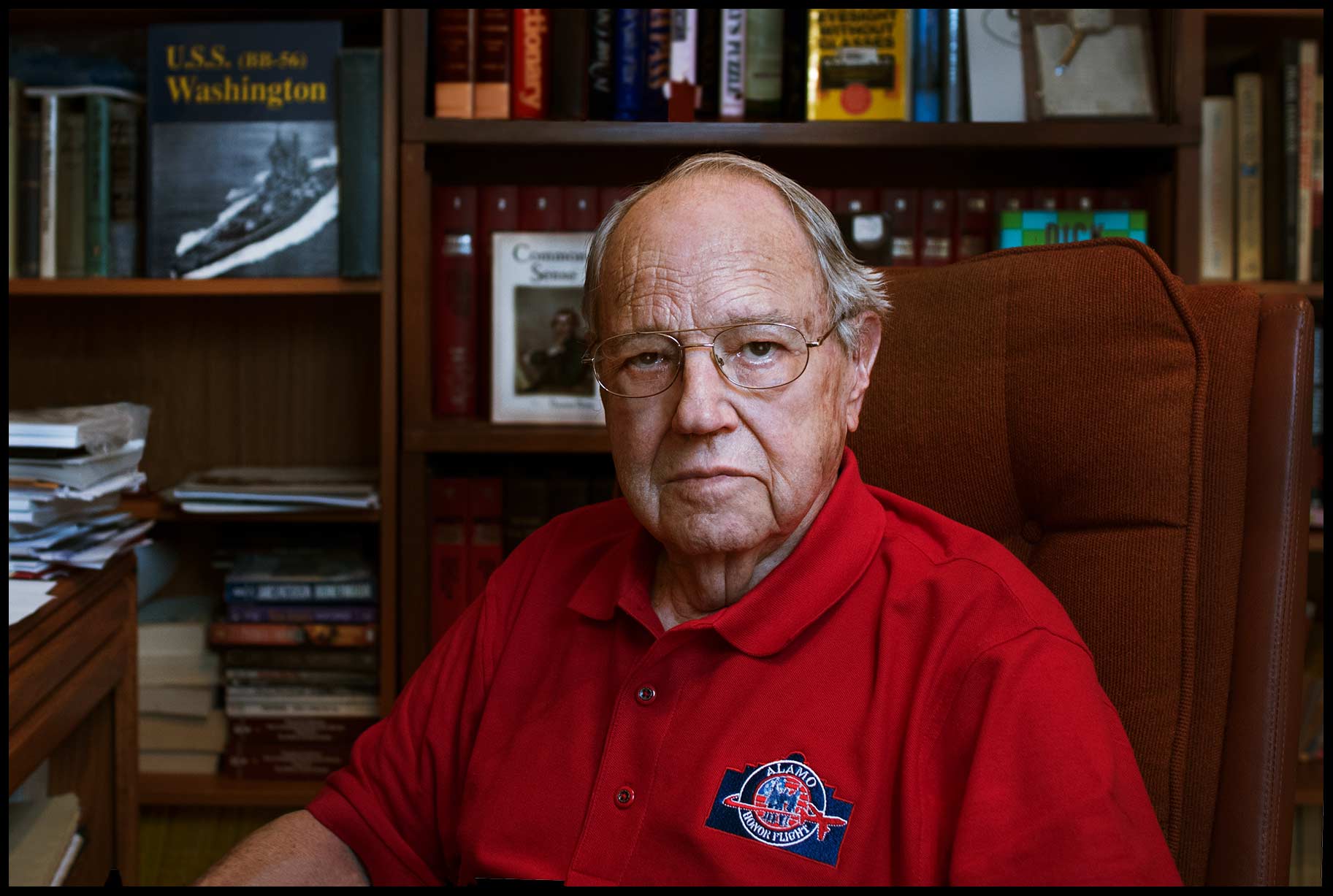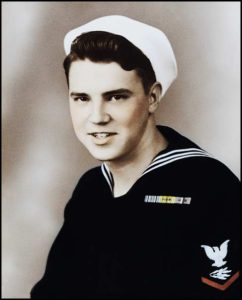
Bill Lozano
Served on USS Washington
Bill Lozano
Radarman 3rd Class, U.S. Navy
1944–1946
We joined the fleet as part of the Task Force to bomb the Japanese Navy and islands. Our job was to protect the aircraft carriers—the golden egg.
Born and raised in San Antonio, it took WWII to get me out. Went to boot camp in January, 1944 in San Diego. I went to radar school at Point Loma and took a test for Radar Operator 3rd Class. I passed. I was assigned to the USS Washington which was being overhauled.
In April, 1944, after a shakedown cruise, we went through Pearl Harbor to some islands we had never heard of. We joined the fleet as part of the Task Force to bomb the Japanese Navy and islands. Our job was to protect the aircraft carriers—the golden egg. A Task Force consisted of 3-4 aircraft carriers in the center, 2-3 battleships around them, then 6-7 cruisers in a circle, and 12-16 destroyers on the perimeter. The Japanese airplanes’ job was to knock the carriers out of commission so that when our planes came back they didn’t have any place to land. The Task Force covered a huge area. We were likely 2,000 yards apart from each ship.
The Washington had a crew of about 2,000. It had a mess hall, ship’s store, and a laundry. It was a small city. My battle station was a lookout in the crow’s nest. The Japanese air force would try to come in under the radar. The lookouts watched the horizon and reported anything coming in. The Japanese would either come early in the morning or at dusk when you could hardly see them. They would have to pass the destroyers, the cruisers, and the battleships to get to the carriers. Some did. We knew our fighter planes and bombers that took off from the carriers; then we had some loose P-38s that the Marines operated. If the radar picked up one of those loose planes coming in, we had to identify him as one of our planes or theirs.
We had a threefold job: protect the aircraft carriers, bombard the islands we were getting ready to invade, and engage the Japanese Navy. The battleship Washington was assigned to the invasion of Saipan and Tinian. We bombarded these islands to soften them up for the Marines to land and have a better edge. We bombarded the hell out of Iwo Jima, but they were buried in the rock and so much of our bombardment went for nil. Then we went to Okinawa.
We came back in June, 1945 to Riverton Navy Yard to overhaul the ship. After Japan surrendered, we were reassigned to the Atlantic and went to England to bring back troops. We made at least two trips.
I wanted to be in the Navy. I was on a ship and you could say it was good duty. We had a place to go to the bathroom, to take a shower and eat and sleep. The Marines slept in foxholes. I had it better than a lot of people did. Everybody just had to do their job.
I got out in 1946. The best thing that happened to me out of the war was the GI Bill. I always wanted to be a lawyer and I went to St. Mary’s University then their Law School, graduating in 1950. In 1953 I started teaching as a part-time professor at the St. Mary’s Law School. I taught until 1991. I had my practice at the same time, handling wills, estates and trusts; I did that for 35 years.
When we retired we did a lot of traveling. We raised three children and got them through college. Been married 64 years. {10-06-2016 • San Antonio, TX}
